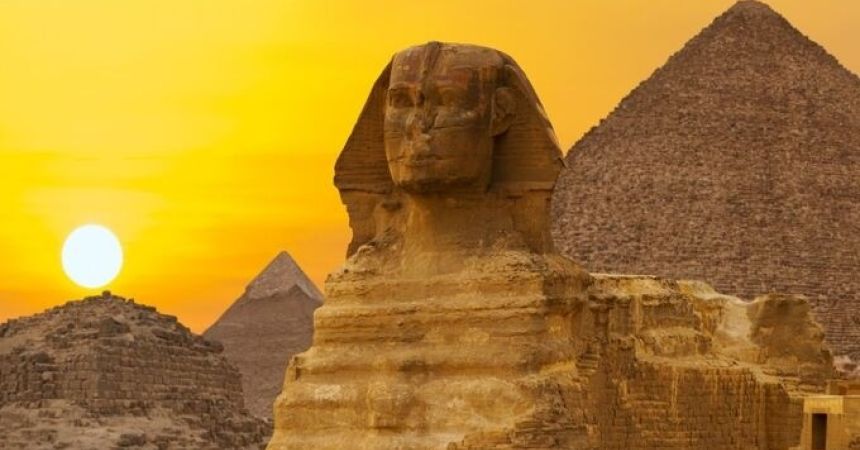
Exploring the Inside of the Egyptian Pyramids
The Egyptian pyramids, with their awe-inspiring grandeur and enigmatic allure, stand as some of the most iconic symbols of ancient civilization. The most renowned among these are the pyramids of Giza, which have fascinated historians, archaeologists, and tourists alike for centuries. While the exterior of these colossal structures is widely recognized, the interior of the pyramids remains shrouded in mystery and intrigue. This comprehensive guide will delve into the architectural marvels, historical significance, and the experiences of exploring the inside of these ancient wonders.
Historical Overview of the Egyptian Pyramids
Origins and Purpose
Visiting Egyptian pyramids, primarily constructed during the Old Kingdom period, served as monumental tombs for the pharaohs and high-ranking officials. The construction of these pyramids was believed to facilitate the deceased’s journey to the afterlife. The design and construction of the pyramids evolved over time, reflecting advancements in engineering, religious beliefs, and the political status of Egypt.
The Pyramid Complex at Giza
The Giza Plateau, located on the outskirts of Cairo, is home to the most famous pyramids: the Great Pyramid of Giza (also known as the Pyramid of Khufu), the Pyramid of Khafre, and the Pyramid of Menkaure. Each of these pyramids was constructed as a tomb for a different pharaoh, showcasing the architectural and artistic achievements of ancient Egypt.
Architectural Design and Construction
Construction Techniques
Building the pyramids involved complex engineering and innovative techniques. Scholars believe that massive stone blocks were quarried, transported, and assembled using ramps and levers. The precise alignment and the scale of the pyramids highlight the advanced understanding of mathematics and astronomy possessed by the ancient Egyptians.
Interior Layouts and Chambers
The interior of the pyramids is characterized by a series of chambers and passageways, designed to protect the pharaoh’s body and burial goods from tomb robbers. Key elements include:
The Burial Chamber: The main chamber where the pharaoh’s sarcophagus was placed. This chamber is typically located at the heart of the pyramid and is often adorned with inscriptions and symbols meant to assist the deceased in the afterlife.
The Grand Gallery: A long, narrow passage leading to the burial chamber, notable for its architectural elegance and engineering precision.
The Subterranean Chamber: Located below the pyramid, this chamber was often left unfinished but played a role in the overall design and symbolism of the pyramid.
Notable Pyramids and Their Interiors
The Great Pyramid of Giza (Pyramid of Khufu)
The Great Pyramid, the largest and oldest of the Giza pyramids, stands at approximately 146 meters (480 feet) high. The interior of this pyramid features:
The King’s Chamber: A perfectly square chamber with a granite sarcophagus, thought to have housed the remains of Pharaoh Khufu.
The Queen’s Chamber: Located lower in the pyramid, this chamber is smaller and believed to be intended for a queen or another important figure.
The Grand Gallery: This impressive 46-meter (151-foot) long corridor features a series of corbelled stones and leads to the King’s Chamber.
The Pyramid of Khafre
Slightly smaller than the Great Pyramid, the Pyramid of Khafre is distinguished by its still-visible original casing stones at the summit. The interior includes:
The Burial Chamber: A simple yet significant space housing the sarcophagus of Pharaoh Khafre.
The Mortuary Temple: Located at the base of the pyramid, this temple was used for rituals and ceremonies associated with the deceased pharaoh.
The Pyramid of Menkaure
The smallest of the three pyramids at Giza, the Pyramid of Menkaure features:
The Burial Chamber: Located deep within the pyramid, this chamber contained a richly decorated sarcophagus.
The Queen’s Pyramids: Adjacent to the main pyramid, these smaller pyramids were built for Menkaure’s queens or high-ranking officials.

Exploring the Interior of the Pyramids
Visitor Experience
Exploring the the pyramids is a fascinating journey into ancient Egypt's architectural genius. While access to certain parts of the pyramids is restricted to protect their integrity, visitors can experience:
Entry Access: Visitors typically enter through a designated passage or entrance, which may involve climbing steep and narrow corridors.
Exploration: Inside, visitors can observe the intricate design and construction techniques, including the precision of the stonework and the alignment of the chambers.
Preservation and Conservation
The interiors of the pyramids are protected and monitored to prevent damage and preserve the ancient artwork and inscriptions. Conservation efforts include:
Climate Control: Maintaining stable temperature and humidity levels to prevent deterioration.
Monitoring: Regular inspections and maintenance to address any potential issues.
The Mysteries and Discoveries
Archaeological Discoveries
Explorations and excavations of the pyramids have yielded significant archaeological findings, including:
Inscriptions and Hieroglyphs: Detailed records of religious texts and funerary practices.
Artifacts: Items found in burial chambers that provide insights into ancient Egyptian culture and daily life.
Unsolved Mysteries
Despite extensive research, several mysteries surrounding the pyramids remain unresolved:
Construction Methods: The exact techniques used to construct the pyramids are still debated among scholars.
Purpose and Symbolism: While the primary purpose is understood, the full symbolic significance of the pyramid's design and layout continues to intrigue researchers.
Practical Tips for Visiting
Planning Your Visit
Tickets and Tours: Purchase tickets in advance and consider guided tours for in-depth information and a more immersive experience.
What to Wear: Dress comfortably and wear sturdy shoes, as exploring the pyramids can involve walking and climbing.
Safety and Etiquette
Respect the Site: Follow guidelines and avoid touching or damaging the ancient structures.
Stay Hydrated: Bring water and stay hydrated, especially during warmer months.
Your Egypt Itinerary: Explore Timeless Wonders
Exploring the inside of the Egyptian pyramids offers a profound glimpse into the architectural brilliance and cultural richness Trip to ancient Egypt. From the grandiosity of the Great Pyramid of Giza to the intricacies of the burial chambers, these monumental structures continue to captivate and inspire. Whether you’re a history enthusiast, an archaeology aficionado, or simply a curious traveler, the experience of venturing into these ancient wonders is a journey through time and a testament to the enduring legacy of one of the world’s greatest civilizations.



